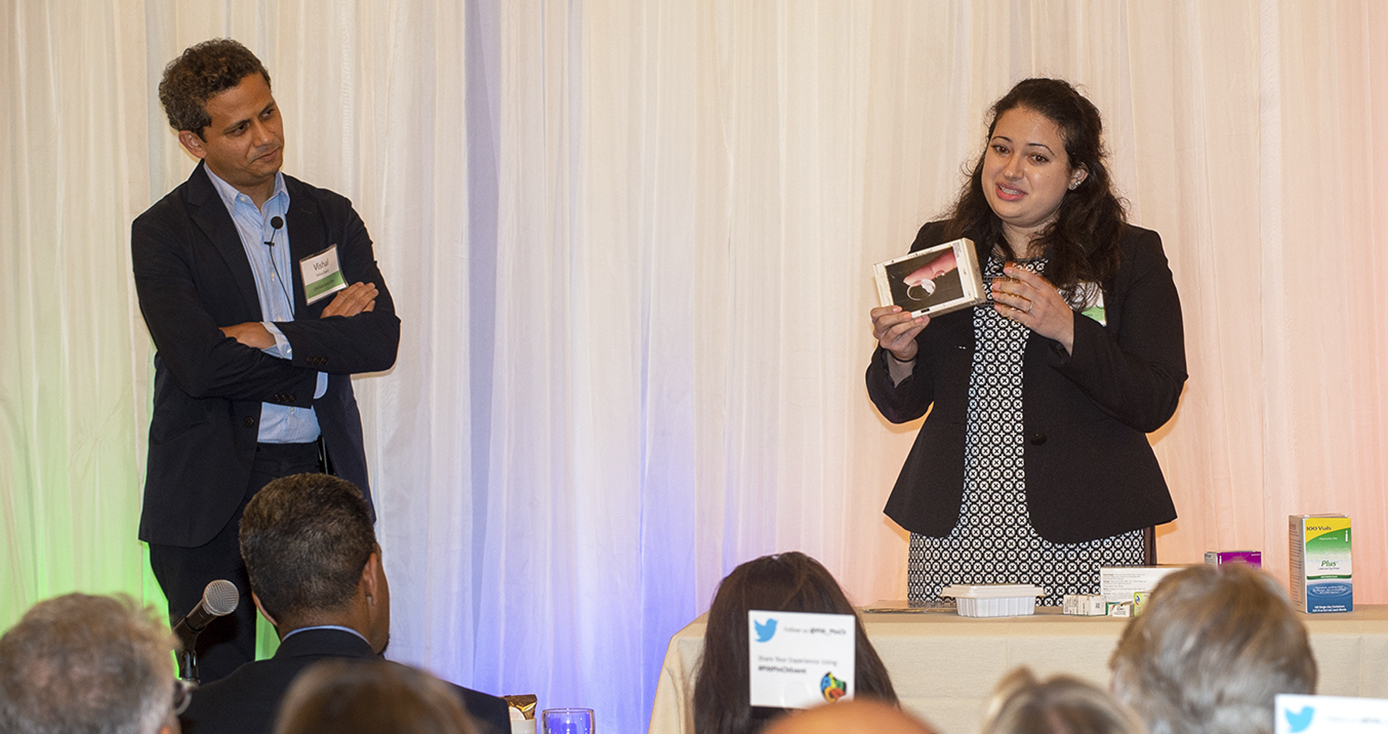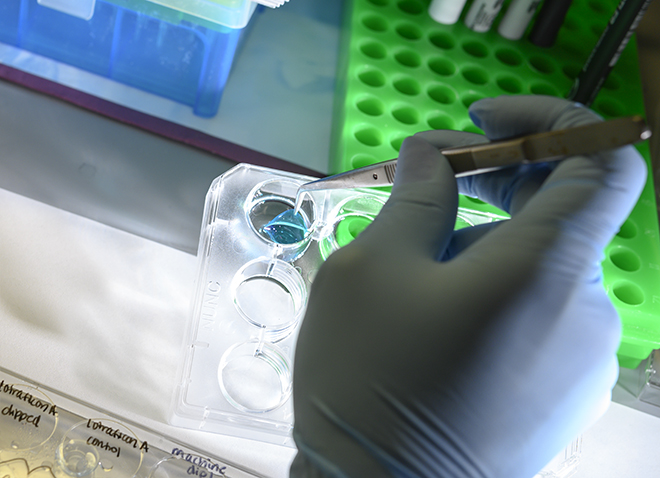
Subscribe to Pittwire Today
Get the most interesting and important stories from the University of Pittsburgh.Researchers See Future of Dry Eye Treatment in Innovative Contact Lens
Alexis Nolfi went to her doctor one day to get treatment for her dry eyes.
Nolfi, a graduate bioengineering student researcher in the University of Pittsburgh’s Swanson School of Engineering, has been dealing this condition for several years now and the eye drop treatments she had been taking were only working temporarily, so she was using eye drops multiple times a day.
“It’s been pretty frustrating and borderline debilitating,” said Nolfi. “I had been using artificial tears every night and all through the day. I still use them all the time and haven’t been getting adequate relief, and I fight with my insurance company to cover prescription eye drop treatments.”
However, this 2018 visit to her eye doctor, Vishal Jhanji, would be different.
While talking with each other in the doctor’s office, they realized the need for better treatment options for dry eye syndrome, which affects millions of Americans each year.
“Dry eye is the most common reason patients come into our office,” said Jhanji, a professor of ophthalmology in Pitt’s School of Medicine. “She (Nolfi) had been using eye drops 10 to 15 times a day.”
Nolfi then decided to experiment with contact lenses given to her by Jhanji to develop a new therapy tool and drug delivery system to target inflammation that can cause this irritating condition. What came out of it was the CyteSolutions Lens, a silicone-hydrogel-based contact lens coated with natural biopolymers — organic molecular structures — containing a drug that targets inflammatory dry eye pathways not targeted by any other current treatments.
“The coating is only activated and degraded whenever it makes contact with the surface of your eye, because there are enzymes in your eyes that work to degrade the polymers we use,” said Nolfi. “This allows the slow and safe release of drugs over a period of hours or even days as opposed to drops that almost immediately fall out of or drain away from your eyes.”
While contact lens-based therapies have been previously developed by dipping lenses in drug solutions, the team is using biopolymers for slow and sustained drug delivery to target the inflammatory pathways in the eye.
“There is a definite need for innovation and ways to deliver drugs to the surface of the eye,” Jhanji said. “We’re not looking to simply replenish the eye; we’re trying to tackle the root cause of this problem.”
Nolfi and Jhanji, along with Swanson School researchers Mangesh Kulkarni and Bryan Brown, recently won one of three $100,000 grand prizes at the 2019 Pitt Innovation Challenge, hosted by Pitt’s Clinical and Translational Science Institute, to further advance their innovation.
Jhanji said dry eye syndrome has become more common in the 21st century, and with that has come more treatment options, ranging from over-the-counter eye drops to surgery depending on the patient.
The CyteSolutions Lens team wishes to eventually take their prototype to clinical trials and will ramp up studies thanks to the competition’s funding. The researchers said anyone who uses contact lenses would be good candidates to try CyteSolutions Lens.
“We don’t expect this lens to feel any different from standard soft contact lenses, and they’re natural with no chemical crosslinking,” said Jhanji.
Pitt’s Innovation Institute, the McGowan Institute for Regenerative Medicine and the UPMC Eye Center assisted with research on the CyteSolutions Lens.



